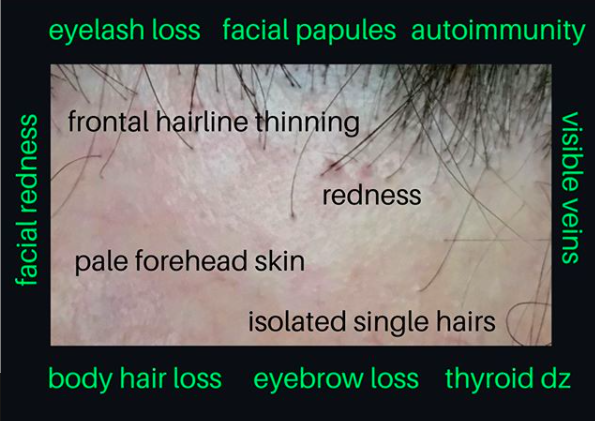Frontal Fibrosing Alopecia: More than Simply Frontal Hair Loss
The Varied Clinical Presentation of Frontal Fibrosing Alopecia (FFA)
Frontal fibrosing alopecia (FFA) is an uncommon autoimmune condition that generally starts between 44-57 years of age and affects women much more commonly than men. The cause is still not fully understood although 4 genes were recently discovered which may have a role.
Although FFA is still uncommon, the number of women diagnosed with FFA is increasing. The age of the internet has greatly increased the number of women who worry they might have FFA. Rarely, does a day go by that a patient of mine says to me “Are you sure I don’t have that FFA condition that have read about?”
FFA is more than simply frontal hair loss. It is a scarring condition that affects the frontal hairline, back of the ears, back of the neck, eyebrows, eyelashes and body hair. It sometimes causes the face to become rough and pebbled looking and may mimic rosacea in some cases due to the redness it can create. The skin may thin are veins may be more visible on the frontal scalp. In some women, the frontal scalp hair loss is the first thing noticed; in others it’s the loss of the eyebrows. For others yet, it may be something completely different such as loss of body hair. Some women with FFA have associated other autoimmune diseases, especially autoimmune thyroid disease.
Treatment has been discussed elsewhere but includes anti-inflammatory agents (topical steroids, steroid injections, hydroxychloroquine, doxycycline, methotrexate), retinoids and hormone blocking agents (antiandrogens).
This article was written by Dr. Jeff Donovan, a Canadian and US board certified dermatologist specializing exclusively in hair loss.

